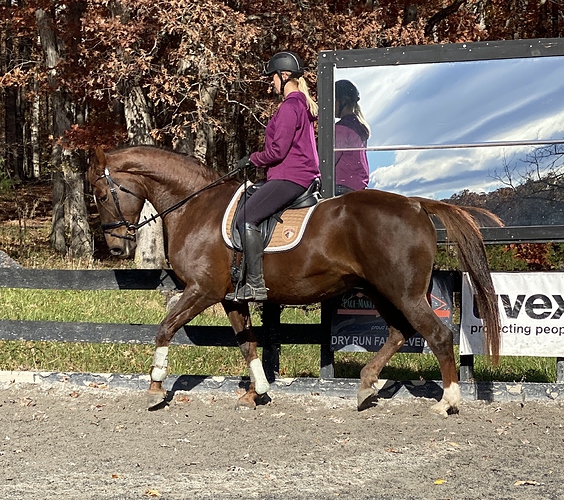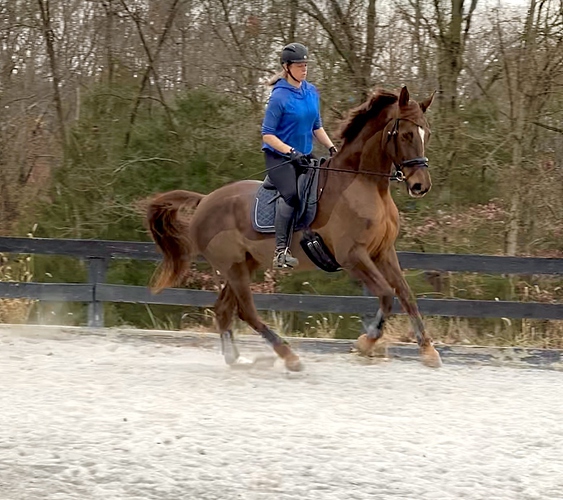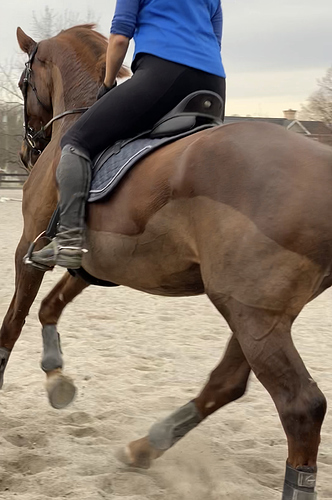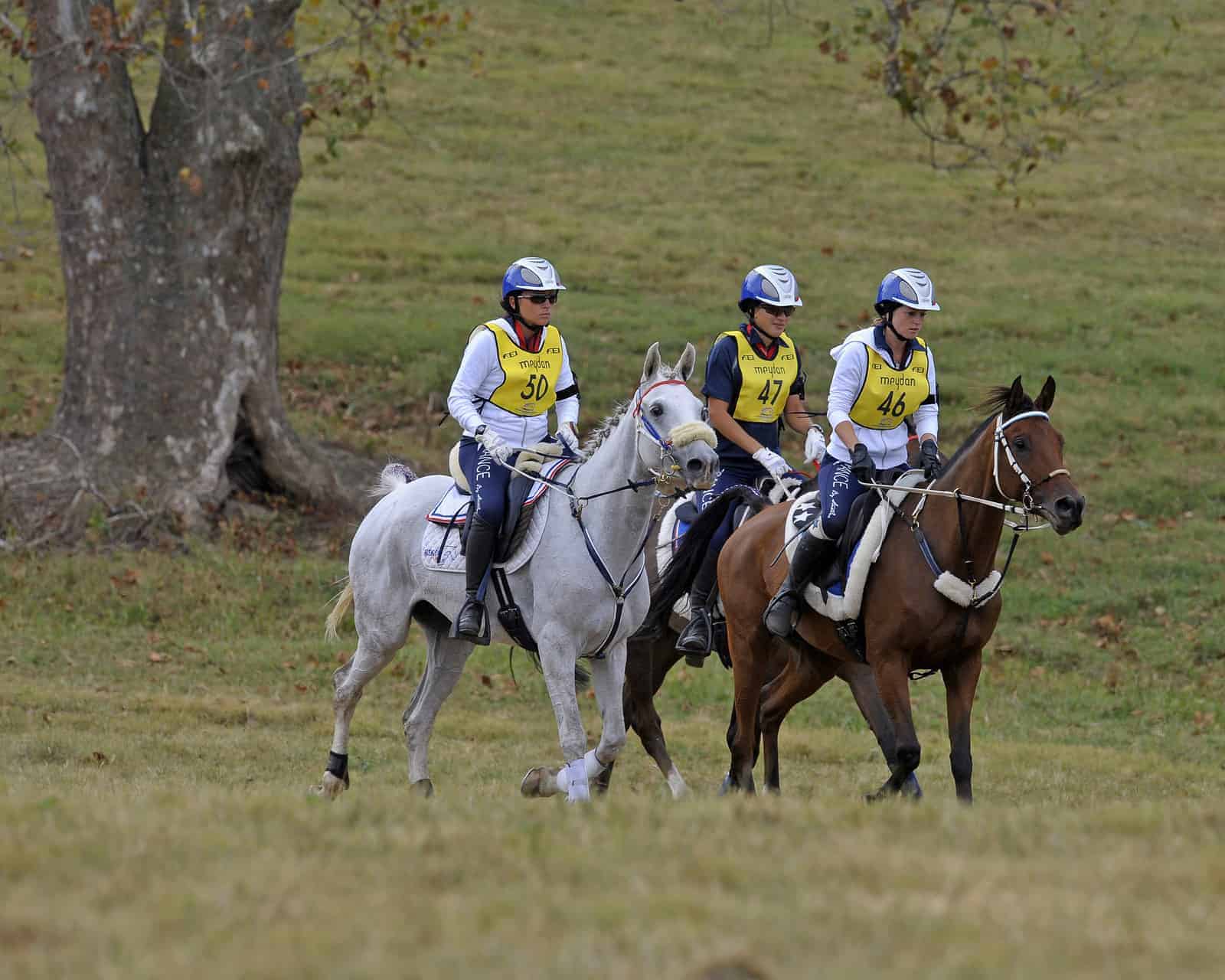I am 6ft tall
I have a 17.1, 1600lb Hanoverian mare who is in 4 heavy work days a week. She is turned out on 1st cutting orchard grass unlimited
we are in Virginia, and currently feeding 6 lbs of Pacemaker from CFC Cool and Fit, 2 lbs Pace maker balancer, and 4 lbs (dry when weighed) beet pulp soaked split into 2 meals.
She is starting to move up the levels, and I am noticing she is running out of steam 1/2 way through her 40-45 min workouts.
She was previously on Tribute Kalm Ultra, the quality of the feed declined over 6-8 months and I went to Triple Crown complete for a year, and the price sky rocketed, and i wasn’t seeing the value of the feed through my mare.
So i am throwing around the idea of Ultium or Gastric care ultium. She doesn’t have any issues with ulcers, she is a happy clam with work. I plan to add some alfalfa to her rations, as that has always benefited her.
anyone have any recommendations? I really like the beet pulp as i like feeding more forage vs grain. please no mention of senior feeds, theyre not enough “umph” even when given in way high amounts for THIS mare.
I wish I knew how to upload a photo 
thanks!




